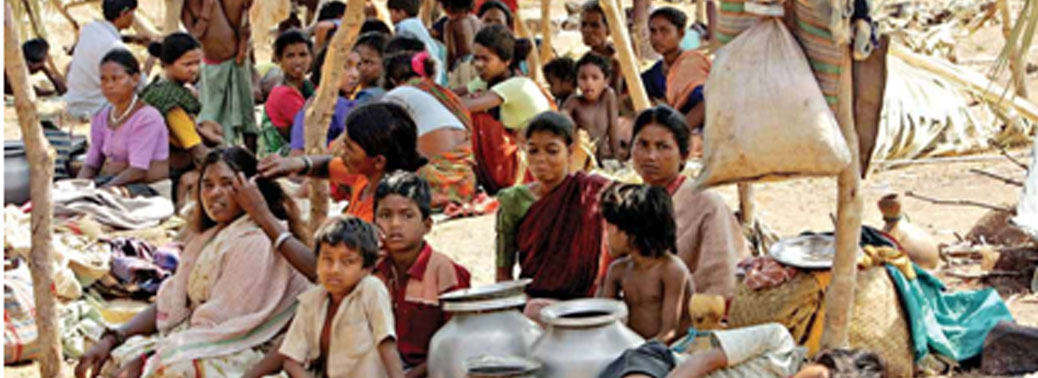WAYS TO MEASURE POVERTY IN INDIA
27, Feb 2020

Prelims level : Governance - Institutional Reforms
Mains level : GS-II Issues relating to development and Management of Social Sector or Services relating to Health, Education, Human Resources.
Why in News?
- President Donald Trump praised India for having lifted over 270 million people out of poverty in a single decade, and said that “12 Indian citizens are lifted out of extreme poverty every single minute of every single day”.
Highlights:
- Poverty can be defined as a condition in which an individual or household lacks the financial resources to afford a basic minimum standard of living.
- The official poverty line is the expenditure incurred to obtain the goods in a “poverty line basket” (PLB). Poverty can be measured in terms of the number of people living below this line (with the incidence of poverty expressed as the head count ratio). The “depth” of poverty indicates how far the poor are below the poverty line.
- Six official committees have so far estimated the number of people living in poverty in India, the working group of 1962; V N Dandekar and N Rath in 1971; Y K Alagh in 1979; D T Lakdawala in 1993; Suresh Tendulkar in 2009; and C Rangarajan in 2014.
- The government did not take a call on the report of the Rangarajan Committee and therefore, poverty is measured using the Tendulkar poverty line. As per this, 21.9% of people in India live below the poverty line.
- The PLB comprises goods and services considered essential to a basic minimum standard of living, food, clothing, rent, conveyance, and entertainment.
- The price of the food component can be estimated using calorie norms or nutrition targets. Until the 1990s, the calorie norms method was used — it was based on the minimum number of calories recommended by the Indian Council of Medical Research (ICMR) for a household of five members.
- The Lakdawala Committee assumed that health and education is provided by the state, therefore, expenditure on these items was excluded from the consumption basket it proposed.
- Since expenditure on health and education rose significantly in the 1990s, the Tendulkar Committee included them in the basket. As a result of revisions to the basket and other changes in the method of estimation, the percentage of people living below the poverty line in 1993-94 rose from 35.97% to 45.3%.
- Expenditure on health and education were not considered until the Tendulkar Committee, which was criticized for setting the poverty line at just Rs 32 per capita per day in urban India (and at Rs 27 in rural India).
- The Rangarajan Commission was criticized for selecting the food component arbitrarily, the emphasis on food as a source of nutrition overlooks the contribution of sanitation, healthcare, access to clean water, and prevalence of pollutants.

Importance of Poverty Estimation:
- Poverty numbers matter because central schemes like Antyodaya Anna Yojana (which provides subsidided foodgrains to households living below the poverty line) and Rashtriya Swasthya Bima Yojana (health insurance for BPL households) use the definition of poverty given by the NITI Aayog or the erstwhile Planning Commission.
- The Centre allocates funds for these schemes to states based on the numbers of their poor. Errors of exclusion can deprive eligible households of benefits.
Other methods of estimation of Poverty:
- Oxford University researchers Sabina Alkire and James Foster devised the multidimensional poverty index (MPI) to capture poverty using 10 indicators: nutrition, child mortality, years of schooling, school attendance, ownership of assets, and access to proper house, electricity, drinking water, sanitation, and clean cooking fuel.
- The MPI is a more comprehensive measure of poverty because it includes components that capture the standard of living more effectively.
- It uses “outcomes” rather than expenditure, the presence of an undernourished person in the household will result in it being classified as “poor”, regardless of the expenditure on nutritious food.






